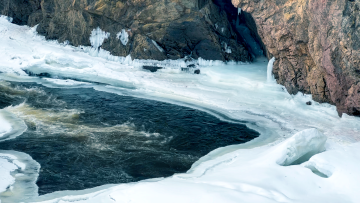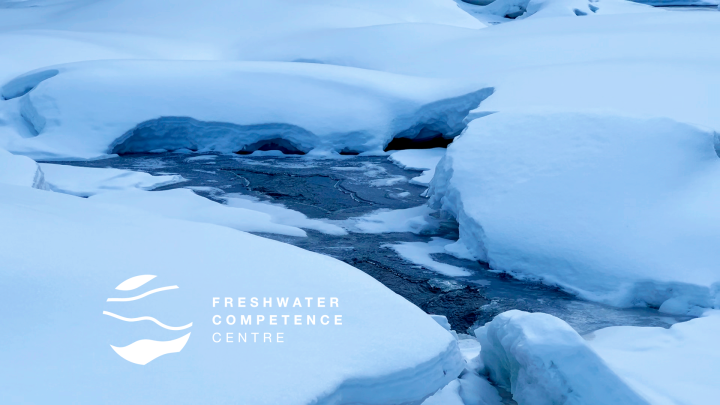Research reveals what happens under the seemingly calm surface of river ice
Big news from this week is the joint Journal of Hydrology publication from Eliisa Lotsari (Aalto university) and Karoliina Lintunen, Elina Kasvi, Petteri Alho & Linnea Blåfield from University of Turku. They measured the near-bed velocity of the meandering part of the river and the sediment transport potential during years 2016-2021. The research was carried out at Pulmanki river in Northern Finland. Read this open science article below:
So what is happening under the ice in this Northern river? Rather expectedly, in the mid-winter, high water discharges cause high velocity and low discharges low velocity of the water near the sediments throughout the meandering river.
Things get interesting in the winters when there is medium discharge: the differences between the narrow and shallow upstream inlets and the deeper, wider downstream parts became obvious. The higher velocities at the narrow and shallow upstream parts are thought to be accelerated by the ice cover confinement, or even bottom-fast ice. The likelihood of the river being able to carry sediments in the medium-discharge years is therefore greater if the river is covered by ice. The research was carried out to find out whether or not the ice cover, or the possible lack of it in the future, may have an effect on the sediment transport, and based on this data, we can say that the answer is yes.

“These verify that despite ice-covered river conditions in winter, sediment transport occurs even during these harshest mid-winter conditions. These results are unique, as we do not know any other study or data set, where these processes have been able to analyse from the natural ice-covered river environment based on such a long-time series. Work will continue, as it is important to also determine the further impacts of these seasonal sediment transport to their outlet areas, and later to the Arctic sea.” Eliisa Lotsari explains.

